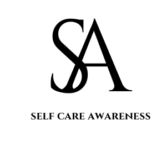
Types of Criticism: Understanding and Navigating Feedback
What is Criticism?
Types of Criticism
- Constructive Criticism
- Destructive Criticism
- Positive Criticism
- Negative Criticism
- Self-Criticism
- Constructive Self-Criticism
Introduction
Criticism is inevitable. Understanding criticism and how to handle it may improve your personal, professional, and creative growth. This article discusses criticism categories and how to manage them. Types of criticism, constructive and harmful criticism, feedback, personal improvement
What is Criticism?
Criticism evaluates someone’s work or conduct, typically suggesting improvements. It can be helpful or harmful.
Types of Criticism
1. Constructive Criticism
Constructive criticism provides constructive input to enhance performance or conduct.
Characteristics
• Specific to specific areas: Specific constructive criticism helps you identify areas for development in your work or conduct.
• Sent with positivity: This constructive critique encourages rather than depresses.
• Provides practical improvement suggestions: Constructive criticism offers ways to improve performance.
How to Handle
• Actively listen without defensiveness: Consider the comments without defending yourself.
• Seek clarification if necessary: Clarify any confusing criticism to comprehend comments properly.
• Implement modifications based on feedback: Consider and apply the advice.
2. Destructive Criticism
Negative feedback is unhelpful and can harm self-esteem.
Features
• Generalized and non-specific: Destructive criticism can be vague, making it hard to pinpoint areas for change.
• Does not provide actionable suggestions: Destructive critique offers no improvement suggestions.
How to Handle Criticism
• Recognize the critic’s intent: Understand that criticism may focus on their concerns rather than your performance.
• Do not take things personally and maintain composure: Keep your cool and don’t allow the bad tone to impact you.
• Identify productive aspects and eliminate the rest: Find helpful input among the criticism and ignore the rest.
3. Positive Criticism
Positive criticism recognizes strengths and suggests opportunities for improvement.
Characteristics
• Appreciative and balanced criticism: Highlight strengths and contributions before highlighting areas for improvement.
• Emphasizes positives before offering improvements: The recipient becomes more confident and open to recommendations with this method.
• Positive criticism promotes development and confidence, promoting progress and improvement.
Handling
• Appreciate acknowledgment of strengths: Recognize favorable feedback.
• Identify opportunities for improvement: Pay attention to improvement recommendations and consider implementation.
• Build on strengths and recommend improvements: Develop your abilities and performance with feedback.
4. Negative Criticism
Emphasizes flaws without appreciating positives.
Characteristics
Negative criticism is characterized by emphasizing flaws and deficiencies without providing helpful suggestions.
• This form of criticism may be demoralizing and depressing, lowering morale and confidence.
• Lacks constructive approach: Negative criticism rarely offers answers or improvement proposals.
How to Handle Feedback: • Acknowledge criticism without internalizing negativity: Avoid letting it damage your self-worth.
• Identify and address legitimate points: Focus on improving areas identified in the comments.
• Keep a good attitude and seek constructive feedback: Be cheerful and seek constructive counsel from others.
5. Self-Criticism
Evaluating and critiquing one’s behavior or performance.
Characteristics
Self-criticism may be useful if balanced and fair, leading to self-improvement.
• Harsh self-criticism can negatively impact self-esteem and drive.
• Shows own standards and expectations: Self-criticism frequently arises from personal objectives and standards.
How to Handle
• Practice self-compassion and fair self-evaluation: Be nice to yourself and accurately evaluate your performance.
• Set attainable improvement goals: Self-assess and set achievable goals.
• Recognize successes while balancing self-criticism: Recognize your triumphs and places for growth.
6. Constructive Self-Criticism
Self-assessment for personal progress.
Characteristics
• Honest and reflective: Good self-criticism demands self-reflection.
• Self-improvement criticism identifies opportunities for personal growth and development.
Constructive self-criticism encourages learning and progress via self-reflection, promoting learning from mistakes.
To manage
• Regularly review performance and behaviors by reflecting on actions and consequences.
• Establish achievable goals based on assessments: Make specific, measurable improvement objectives from your reflections.
Celebrate accomplishments and learn from setbacks: Celebrate your successes and learn from your errors.
Conclusion
Personal and professional growth requires understanding different kinds of criticism and how to handle them. Learn from negative criticism, accept constructive input and practice self-compassion. By handling criticism successfully, you may develop and strengthen relationships and improve your health. These tactics and insights may turn criticism into a strong weapon for success and progress.
